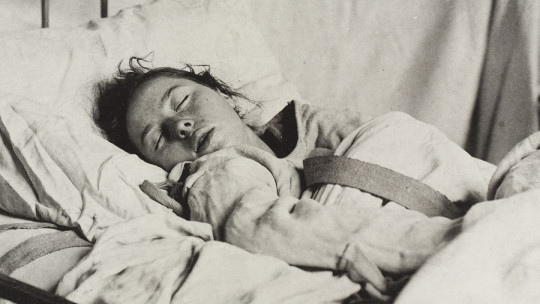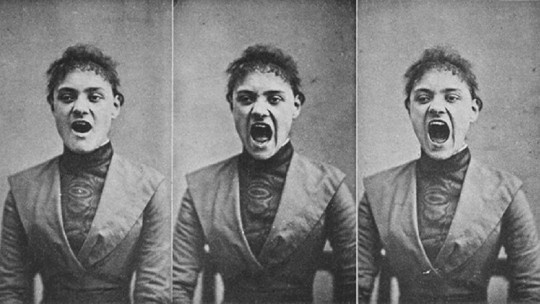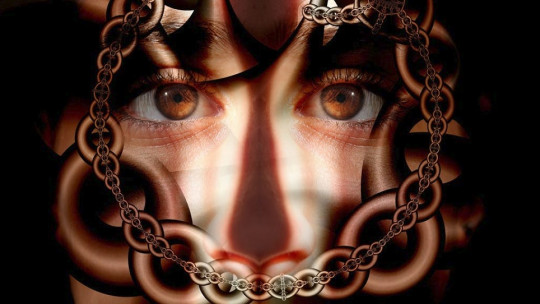It is common for healthy people to occasionally experience some episode of somatization throughout their lives. Somatization is the unconscious ability to convert psychological afflictions or conflicts into physical, organic and functional symptoms.
However, in health sciences, when this somatization becomes pathological we can speak of conversion disorder. Likewise, there is a broad categorization of different types of conversion disorder according to accepted physical or psychological functions.
What is conversion disorder?
Conversion disorder or dissociative disorder was formerly known as conversion hysteria and it was with the well-known psychiatrist Sigmund Freud with whom it gained greater popularity; which stated that unresolved internal conflicts become physical symptoms.
This disorder is distinguished by the presence of a series of neurological symptoms that impair sensory and motor functions However, the most characteristic of all is that there really is no underlying disease that causes or justifies them.
As its name suggests, the person who suffers from conversion disorder unconsciously transforms their worries or psychological conflicts into symptoms, difficulties or deficits on a physical level; such as blindness, paralysis of a limb, insensitivity, etc.
Usually, patients affected by this disorder tend to deny all those conflicts or problems that are evident to other people.
Types of conversion disorder
According to the ICD-10 Manual, there are different types of conversion disorders depending on what functions or capabilities are affected.
1. Dissociative amnesia
In this subtype of disorder the person suffers memory loss in which they forget all recent events. This loss has no organic origin or cause and is too pronounced to be due to stress factors or fatigue.
This loss of memories mainly affects traumatic events or events with a very intense emotional charge, and tends to be partial and selective.
This amnesia It is usually accompanied by various emotional states such as anguish and confusion, but in many cases the person accepts this disorder in a very peaceful way.
The keys to diagnosis are:
2. Dissociative fugue
In this case, the disorder meets all the requirements of a dissociative amnesia, but it also includes an intentional transfer away from the location where the patient usually resides; this displacement tends to be to places already known to the subject.
It is possible that an identity change may even be made by the patient, which can last from days to long periods of time, and with an extreme level of authenticity. Dissociative fugue can occur in a seemingly ordinary person to anyone who does not know them.
In this case the standards for diagnosis are:
3. Dissociative stupor
For this phenomenon, the patient presents all the symptoms typical of the state of stupor but without an organic basis that justifies it. Furthermore, after a clinical interview, the existence of some traumatic or stressful biographical event is revealed, or even relevant social or interpersonal conflicts,
Stupor states are characterized by a decrease or paralysis of voluntary motor skills and a lack of response to external stimuli. The patient remains immobile, but with muscle tone present, for a very long time. Likewise, the ability to speak or communicate is also practically absent.
The diagnostic pattern is as follows:
4. Trance and possession disorders
In trance and possession disorder, a forgetfulness of one’s own personal identity and awareness of one’s surroundings originates. During the crisis the patient behaves as if possessed by another person, by a spirit or by a higher force.
Regarding movement, these patients usually manifest a set or combination of very expressive movements and displays.
This category only includes those involuntary trance states that occur outside of culturally accepted ceremonies or rites.
5. Dissociative disorders of voluntary motility and sensitivity
In this alteration, the patient represents suffering from some somatic ailment for which no origin can be found. Usually the symptoms are a representation of what the patient believes the illness to be but they do not have to conform to its real symptoms.
Furthermore, like the rest of conversion disorders, after a psychological evaluation, some traumatic event, or a series of them, becomes evident. In addition, In most cases, secondary motivations are discovered such as a need for care or dependency, avoidance of responsibilities or conflicts that are unpleasant for the patient.
In this case, the keys to diagnosis are:
- There is no evidence of the existence of a somatic disease.
- Precise knowledge of the patient’s environment and psychological characteristics that lead one to suspect that there are reasons for the appearance of the disorder.
6. Dissociative motility disorders
In these cases the patient manifests a series of mobility difficulties, in some cases suffering a total loss of mobility or paralysis of some limb or limbs of the body.
These complications can also manifest in the form of ataxia or coordination difficulties; in addition to shaking and small tremors that can affect any part of the body.
7. Dissociative seizures
In dissociative seizures the symptoms can simulate those of an epileptic seizure. However, in this disorder there is no type of loss of consciousness but rather a small state of dullness or trance.
8. Anesthesias and dissociative sensory losses
In dissociative sensory deficits, problems of lack of skin sensitivity, or alterations in any of the senses They cannot be explained or justified by a somatic or organic condition Furthermore, this sensory deficit may be accompanied by paresthesias or skin sensations without an apparent cause.
9. Mixed dissociative disorder
This category includes patients who present a combination of some of the above disorders
10. Other dissociative disorders
There are a series of dissociative disorders that cannot be categorized in the previous classifications:
Ganser syndrome
Multiple personality disorder
- Transient conversion disorder of childhood and adolescence
- Other specified conversion disorders
Finally, there is another category called conversion disorder unspecified which includes those people with dissociative symptoms but who do not meet the requirements for the previous classifications.











